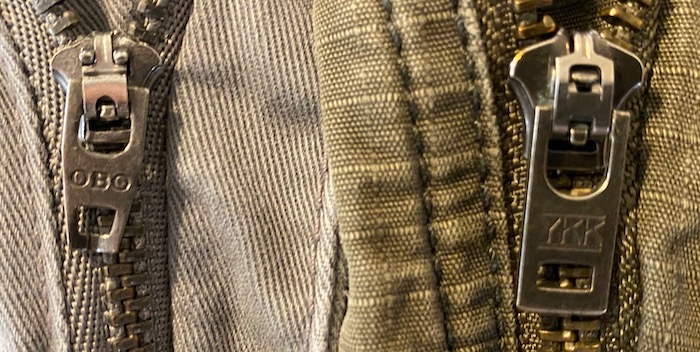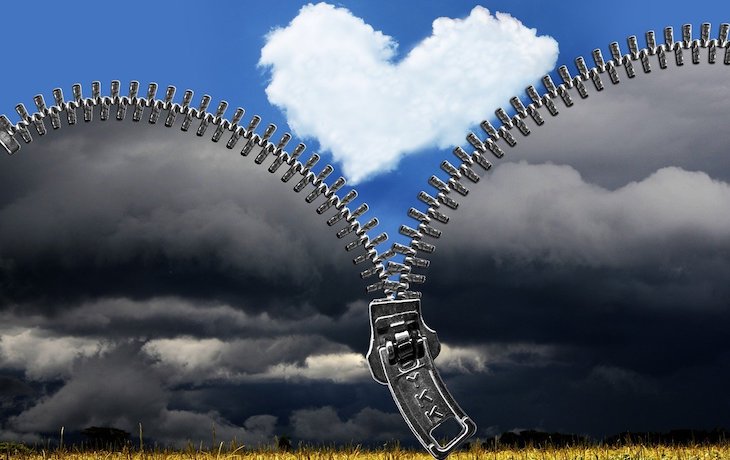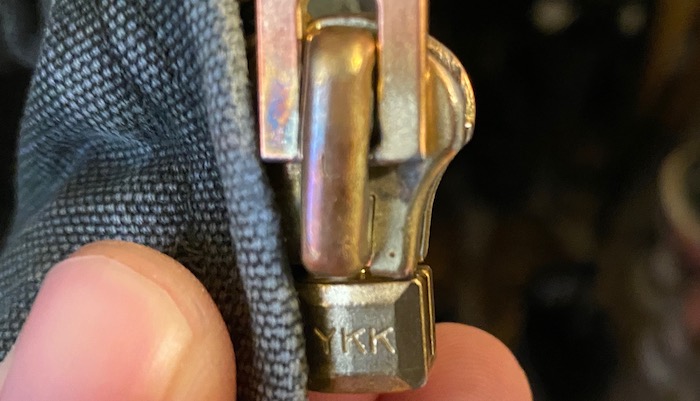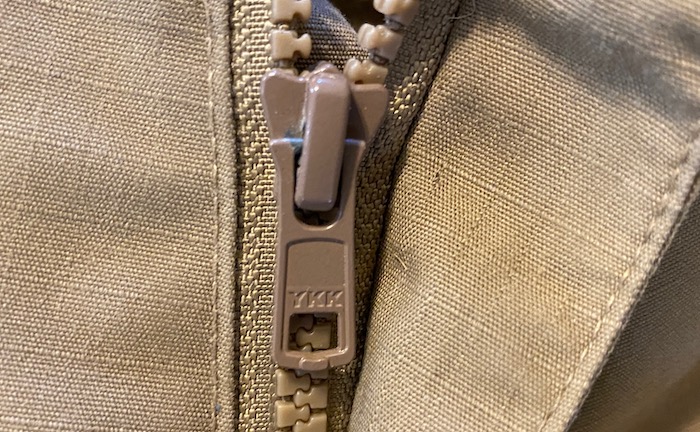A ‘pro tip’ for evaluating the quality of a piece of gear is to look at the small details, such as zippers and stitching. Cheap-minded manufacturers will skimp on those details because most people just don’t notice, and even a cheap component will often last past a basic warranty period, so it’s an easy way to increase profits without losing sales or returns.
If a designer does bother to invest in quality components, that’s a tried-and-true sign that the overall product is better than the competition.
Zippers are a classic example when looking at backpacks, clothing, and similar gear. And although there are a few other fine zipper brands out there, the king is YKK Group — to the point that the first thing some gear reviewers look for is the “YKK” branding on the zipper pull tab.
My dad used to do some work for YKK back in the ‘90s, so I wanted to dig deeper into why they’re the king and what makes their zippers so associated with quality.
YKK history
YKK is short for Yoshida Kōgyō Kabushikigaisha, founded by Tadao Yoshida in 1934. Today, the YKK Group makes roughly half of the world’s zippers.
Yoshida didn’t invent the zipper — the concept predated YKK by nearly a century and the first zipper manufacturer was Talon Zipper, founded in 1893. Yoshida copied Talon’s design and began making his own zippers out of Tokyo until it was firebombed at the end of World War II.
After the war, Yoshida moved back to his hometown of Kurobe and started over, and that’s when YKK’s greatness began. Over the following decades, YKK grew from being an imitator to an innovator, creating the world’s first nylon zipper, polyester zipper, concealed zipper, and the world’s smallest zipper. YKK zippers were used in the spacesuits that went to the moon in 1969.
How did Yoshida rebuild from nothing to build the greatest zipper producer in the world?
What makes YKK zippers so good?
Yoshida was inspired by Andrew Carnegie’s Gospel of Wealth to create his own business philosophy, called the Cycle of Goodness. In short: no one prospers without rendering benefit to others. The Cycle of Goodness seeks to create what many of us in the United States would call a “360 win” where the company, its employees, its customers, and all of society benefits from what YKK does. While YKK avoids the media, the company takes the Cycle of Goodness so seriously that it produced a 10-issue manga series that explains it in detail. (YKK also made a zipper-themed anime.)
Many companies have some sort of lofty mission statement that flies out the window the second it gets in the way of business, but Yoshida’s own son compared him to a cult leader in his dedication to The Cycle of Goodness. (You might say Yoshida was the Steve Jobs of zippers.)
That philosophy led to an obsession with vertical integration, constant refinement, and being a good guest in the countries YKK spread to. YKK set up subsidiaries in other countries to work around tariffs and purchased most of its materials and machines from that country — with the exception of YKK’s specialty zipper-making machines, which are a closely guarded company secret.
The YKK Group has developed an unrivaled reputation for zipper quality. Fashion designer Trina Turk once told Slate:
Now we just stick with YKK. When the customer is buying $200 pants, they better have a good zipper. Because the customer will blame the maker of the whole garment even if the zipper was the part that failed.
Ororo, a company that sells heated outdoor clothing, published a post praising YKK zippers: “The zipper is tiny, but it is also so significant because a well-made zipper ensures you wear the jacket for years while a poorly-constructed zipper destroys the whole wearing experience with all sorts of problems.”

YKK doesn’t share many technical details, but Ororo shed some light on what makes YKK zippers so good:
- Square-tooth technology that ensures smooth, reliable zipping
- Self-locking design that keeps the zipper from unzipping itself
- Self-lubrication that keeps the zipper working well
Recycled Firefighter, a company that makes wallets and other gear from recycled fire hose, also praises YKK zippers:
YKK Zippers are amazing, because they self-lubricate the more you use them. You’ll notice that other brands of zippers become sticky and gritty over time. Not with YKK…They will feel more smooth, the more you use them.
They also tout YKK’s water resistance: “YKK Zippers seal up incredibly tight when zipped up. They are also treated in such a way that they shed water quickly, and repel it from seeping through to your inside contents.”
Erika Bunker, the proprietor of the long-running DIY Style fashion sewing blog, said of YKK zippers:
So as of today, YKK is my zipper brand. They’re considered the best zipper brand in the world. And it’s the brand that most designers use. Just grab a random RTW garment of yours and look at the zipper. It will almost always be stamped “YKK”.
Reddit user ectomania said in the great r/BuyItForLife subreddit, “If you want something that can be abused for years and years and still performs like a champ, YKK is your best bet.”
Why brown M&Ms can mean big trouble
The point isn’t an unpaid advertisement for zippers, but to illustrate how producers who care about the quality of their products hone in on the fine details. It’s not a perfect heuristic. A manufacturer could spring a few cents for YKK zippers and cut corners elsewhere, but that’s rare and the correlation pattern has held up well over time.
Here’s a story to illustrate the concept. The rock band Van Halen became notorious for demanding no brown M&Ms backstage at their shows. For years, stories abounded about how Eddie Van Halen would walk away from shows or destroy entire stages if he saw a single brown M&M. Van Halen’s diva behavior became a rock and roll legend.
But the truth was that the brown M&M demand was a smart safety precaution. Van Halen put on elaborate, potentially dangerous shows, and it was essential that all of the work was performed correctly. If the band walked backstage and saw brown M&Ms, they instantly knew that the instructions hadn’t been followed. Once, the band noticed the brown M&Ms and the stage later collapsed because the stage crew didn’t follow orders. Of course, the story became Van Halen destroying a stage because they hate brown M&Ms and the legend grew. (It didn’t help that Eddie Van Halen trashed the dressing room between discovering the M&Ms and the stage collapsing.)
The next time you’re looking at your clothes or gear, take a look at the zippers. I have a Carhartt jacket that I love, and sure enough, the zipper is YKK. The zipper has always been rock-solid reliable.
My favorite pants at the moment are the Basic Operator Pant from LA Police Gear. Sure enough, they also have a YKK zipper.
You can’t judge a book by its cover, but it’s a pretty good indicator of the contents. In a world plagued by information overload, it’s useful to have little guideposts like this that help you make decisions.
There are other signs to look for in products. For instance, a full-tang knife will usually be better-made than a partial-tang knife. Shoes and boots with a Goodyear welt construction are usually well-made (and can be repaired by a cobbler).
What little things do you look for when evaluating a product? What are your brown M&Ms?



You are reporting the comment """ by on